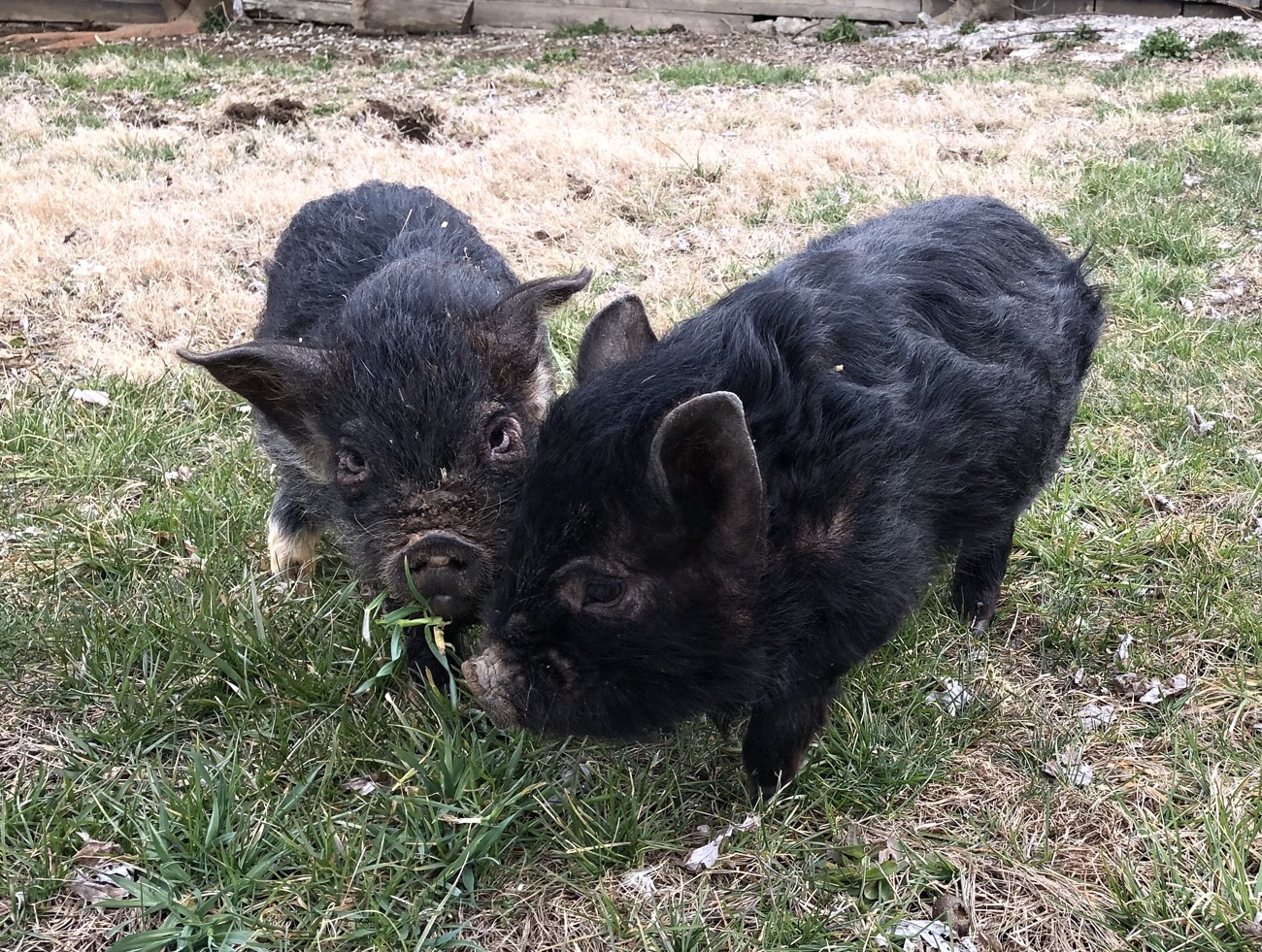
We’ve wanted to add pastured pigs to the lineup for a while, but didn’t feel ready for them. After doing some research, we decided it was time…so meet the pigs!
We chose pigs that would do well in a rotational pasture setting, as well as provide meat and – importantly – lard. Ours are Meishan and KuneKune mixes, breeds that are well-suited to pasturing. We’re fortunate to have pastures full of lush greens, ready for grazing animals. From a sustainability standpoint, it’s only logical to utilize that chemical-free salad bar to produce delightful pork!
Since it’s our first foray into pig-raising, we also wanted smaller, slower-growing breeds so we could learn as we go…and not have worry about managing larger breeds, like Red Wattles, that can weigh in excess of 600 pounds (and as much as 1200!) at this point. Red Wattle pigs produce incredibly flavorful pork, though, so maybe we’ll reconsider in the future, with more experience under our belts.
In addition to pasture greens, our pigs will be offered a non-GMO supplemental feed from our local feed mill (same place that supplies our non-GMO poultry feed), as well as fresh eggs, milk, and ferments. They love fresh fruits and veggies, too!
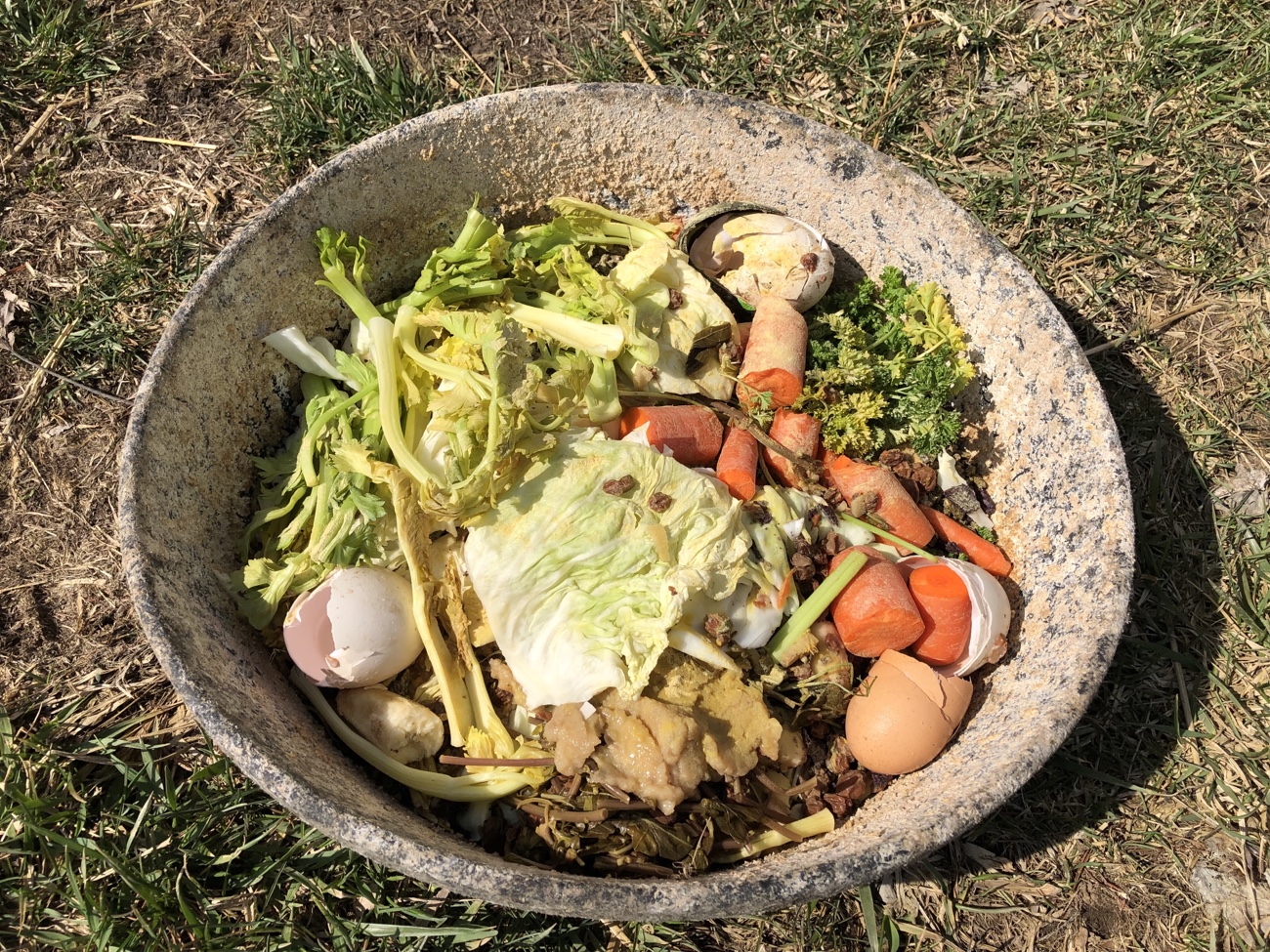
So how are we learning about raising pigs? For starters, I have my trusty book (used, from eBay):
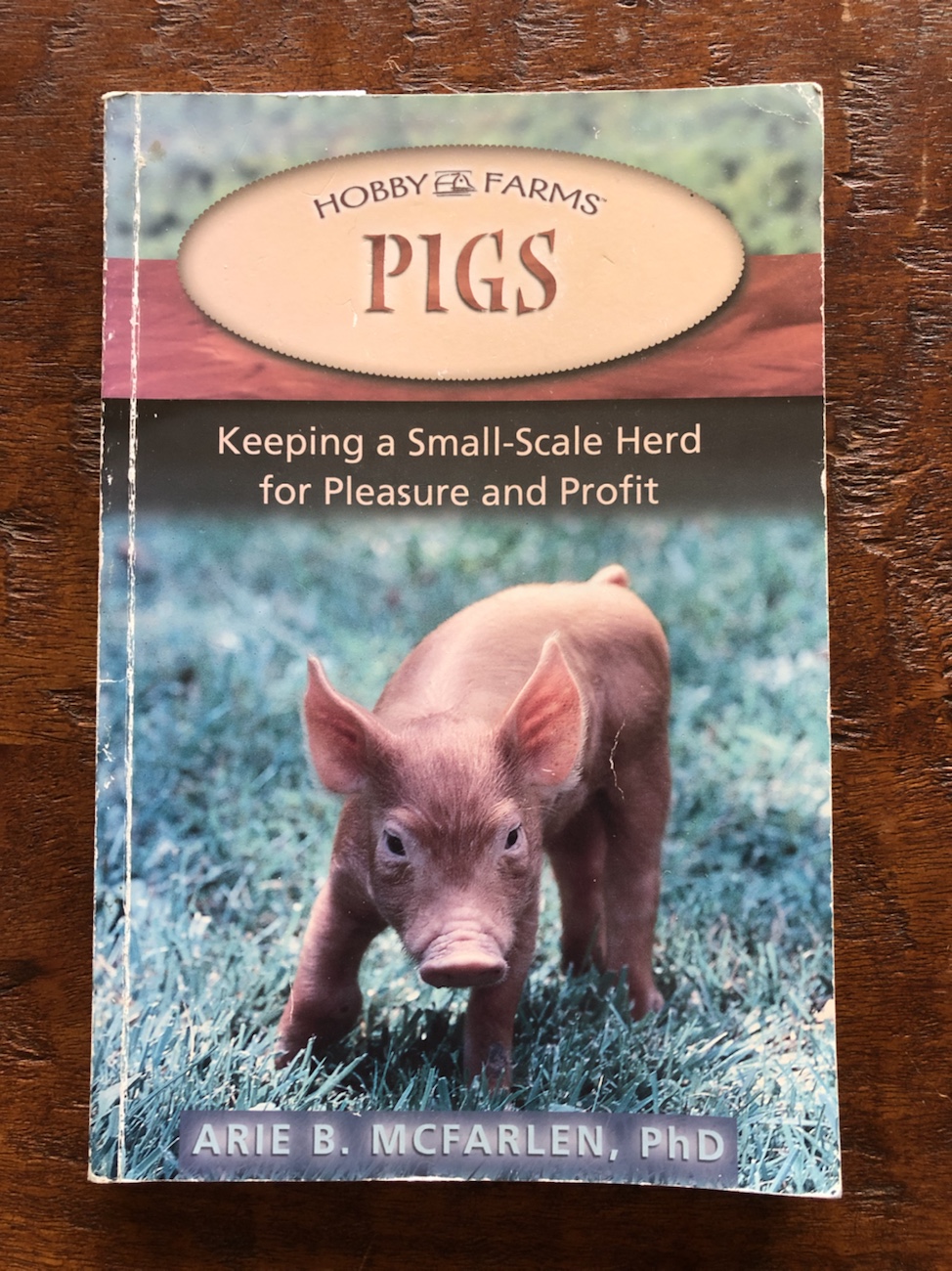
And I’ve been researching various aspects, like feeding, shelter, water requirements, pasturing, health issues, etc., on different websites. We know we’ll continue learning as we go, too.
Day 1: Went to get the pigs – a sow and her three piglets. Two of the piglets were carsick during the trip…poor guys.
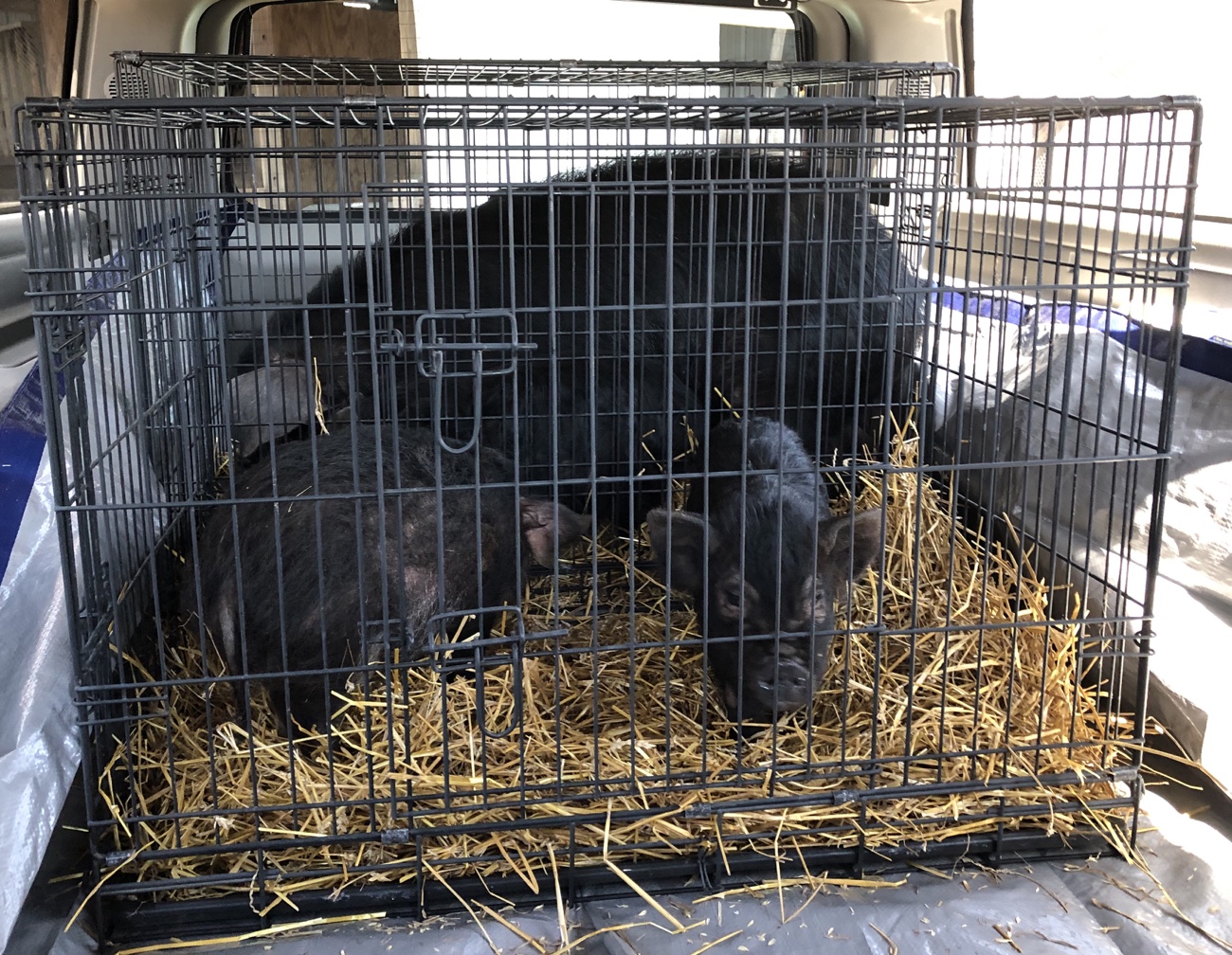
When we got home, the sow didn’t want to come out of the kennel she was in (in the back of the car), so we had to lift the kennel to the ground, fervently hoping it remained in one piece (she’s a big girl). It did, but not before it took a couple of chunks out of my hand and finger.
Once on the ground, we opened the kennel door and tried to encourage her out. No dice. After more encouragement, she ran out and around us (fast!) to our chagrin. Fortunately, she only went a few feet and then began grazing enthusiastically. She wasn’t exactly cooperative, but we managed to get her to head in the direction of the barn, where an enclosure with a thick layer of straw awaited her and the piglets.
Once everyone was in the enclosure, we brought out a meal and fresh water. I don’t think that there will be much left for composting now. 😄 They ate very enthusiastically, and Mom seemed especially excited about the fermented feed (you’ve come to the right place – ferments for everyone!).

Day 2: the pigs spent the night in the barn in a secure enclosure, but we wanted to get them out on pasture, so we set up fencing so they could access pasture and also go back into their own room in the barn at will. They were so happy on pasture, and immediately began rooting around and lying in the sunshine. They’ve already figured out who brings the food, and they come running when they see us.
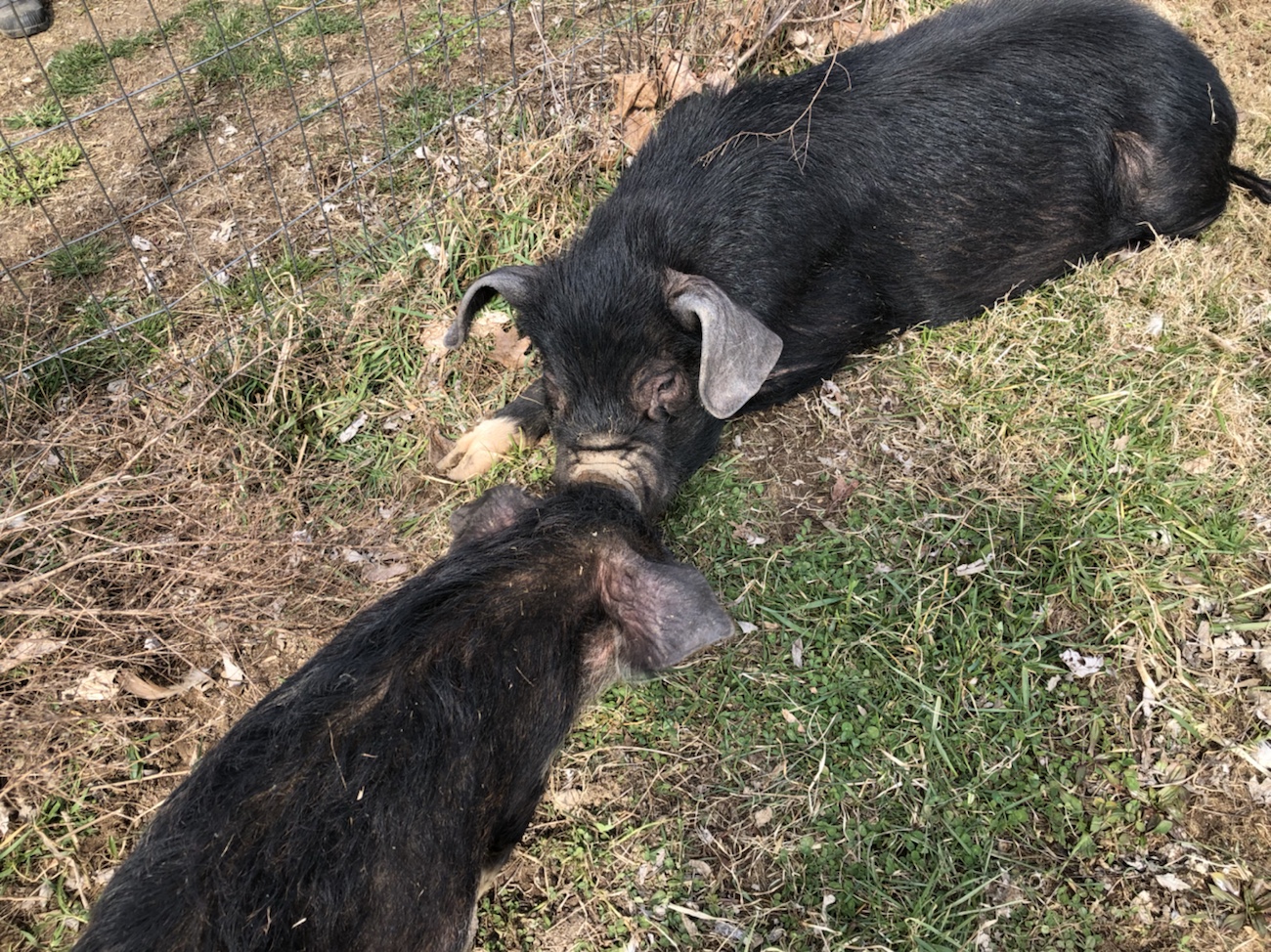
Mom is friendly and easygoing, and one of the piglets is gregarious like her. Another is more cautious, and the smallest sticks close to Mom. Even the piglets will come up to us and sniff our hands, though. It looks like they can all use some hoof trimming, so we’ll need to learn how to do it – fortunately, there are lots of good resources and online tutorials on the topic.
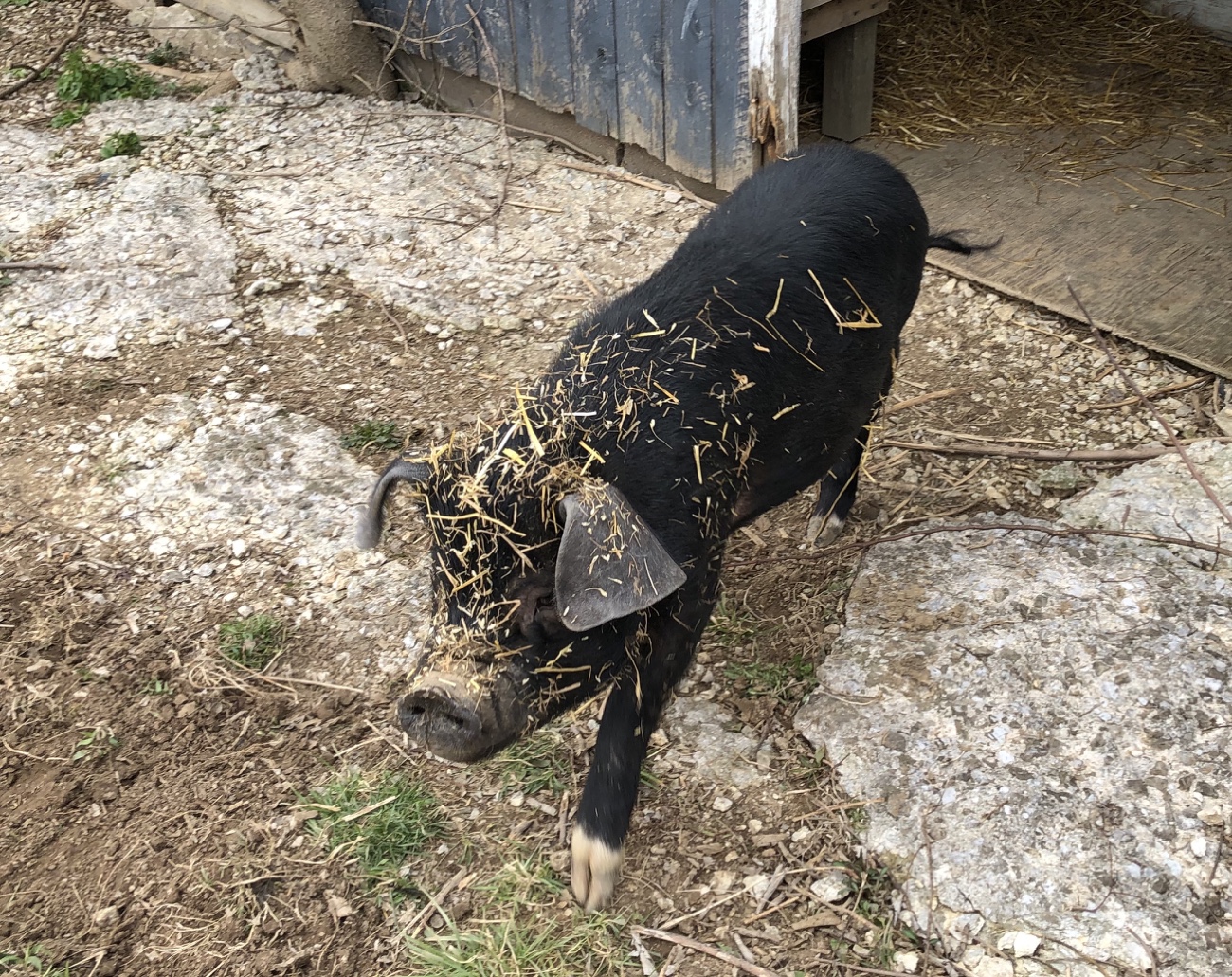
I think we made the right choice in starting with small pasture pigs…and they’ve been such fun to have around!

Comments are closed.